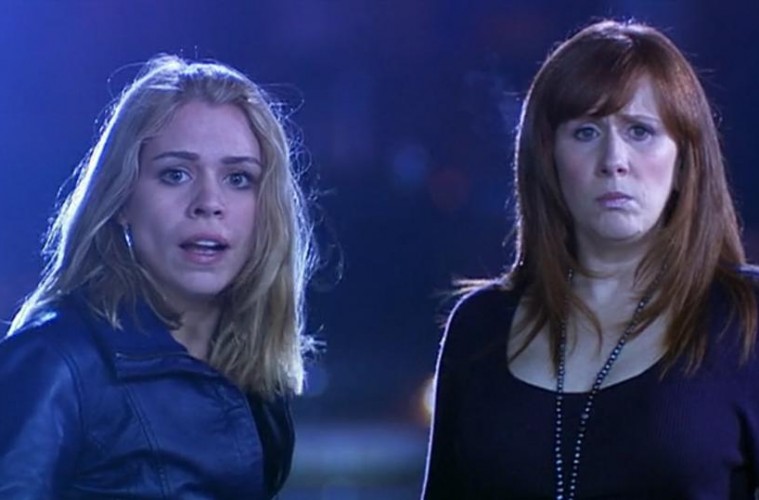At first glance, Doctor Who seems male-driven. The Doctor has been played by a male from the beginning, the show is predominantly written by two men (Russell T. Davies and Steven Moffat), and the guys typically outnumber the girls. But, if you were to take the women out of the picture, it would be a very different show.
Without them, the Doctor would very likely be dead. This doesn’t mean that the women are stereotypically static heroines without flaws or complexities, however. Every female character on Doctor Who has her own unique personality that furthers the show and the life of the Doctor.
Rose was the first companion of Nu-Who. When she came into the Doctor’s life, he had just gotten out of a war in which he was forced to destroy his own species. She was very human and had a big heart, which was exactly what he needed at the time. She chose caring for her mother over exploring space, until she knew she could come back in time as well, as if she had never left. Rose taught the Doctor to be better and show compassion for all alien species, forcing the Doctor to give enemies a chance at redemption rather than eliminating them outright. When the Doctor was about to die, Rose came through for him by becoming the most powerful being in the universe because she loved him; she left the words “Bad Wolf” scattered throughout all of time and space wherever he’d need a warning. Rose ultimately taught him to love.
After losing Rose, the Doctor meets Martha, who is studying to become an actual doctor. Martha challenges the stereotype that only men can excel in the medical field and proves her intelligence multiple times. (She even names every bone in the hand to someone who questions her.) She also proves her strength; when the Doctor is being held captive by the Master, she walks the entire globe telling stories of the Doctor, and ultimately saves the world singlehandedly. Martha exemplifies what it means to be an independent woman, not only through her studies and displays of bravery, but also by her ability to walk away from a man she knows won’t love her back.
The writers of Doctor Who even played with the idea of the Doctor not having met Donna, and he dies very quickly in that scenario. In a seemingly small moment in Donna’s first episode, the Doctor tries to drown a giant spider-like creature, Empress of the Racnoss, but Donna tells him to stop. In a much later episode, “Turn Left,” it’s revealed that the Doctor would’ve died if Donna hadn’t been there. There’s then a domino effect, with every future alien invasion that the Doctor and Donna stopped together wreaking havoc on the planet. Donna believes that the Doctor needs a companion for the simple purpose of telling him when he has gone too far; he needs someone to tell him when to stop.
Rather than being second to The Doctor, Amy is the central figure during her time on the show, and she voices the opening monologue of every episode. No other season features an opening monologue, but it serves as an interesting way to remind fans who the main character really is. The Doctor was simply her imaginary friend, the raggedy man. Like every companion, Amy is also responsible for saving the Doctor’s life at one point or another. She brings him back into existence in a world where he never existed.
There’s no denying that River Song is the most badass character on Doctor Who. Raised for the sole purpose of killing the Doctor, but choosing to marry him instead, River Song is fearless and plays by her own rules. Her favorite toys are her gun and hallucinogenic lipstick, which she uses to break out of her prison cell. She can fight not only her own battles, but everyone else’s as well.
The women of Doctor Who carry the Doctor. They take care of him and make him a better person (or alien). They’ve singlehandedly saved the world, or saved the Doctor, and have proven their own strength and intelligence time and time again. It’s been clear from the start that the Doctor needs his female companion, not vice versa. If this isn’t a win for feminism within the geek community, nothing is.
Header Image via BBC


